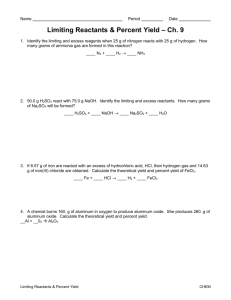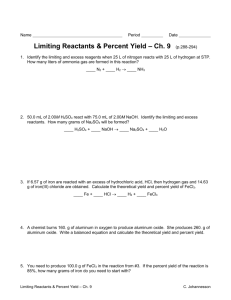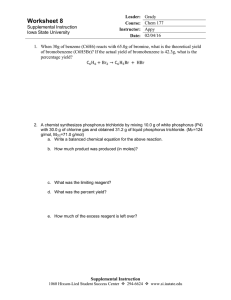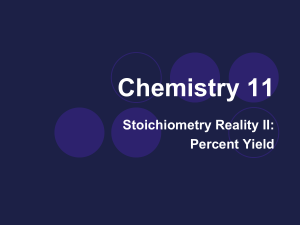Section 3.3 Stoichiometry and Chemical Reactions
advertisement
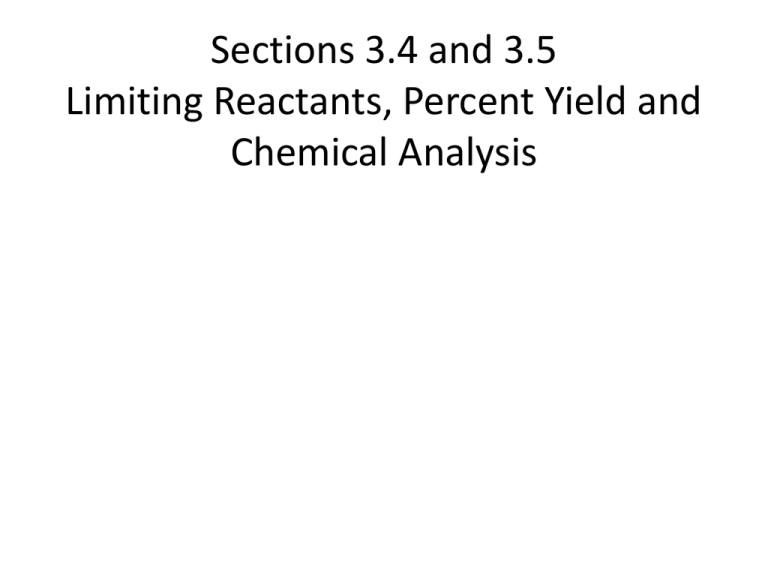
Sections 3.4 and 3.5 Limiting Reactants, Percent Yield and Chemical Analysis In these sections: a. Identifying limiting reactants b. Calculating theoretical yield c. Calculating percent yield d. Chemical analysis The Idea of Limiting Reactants If you have 200 tires and 75 steering wheels, how many cars can you make? Identifying Limiting Reactants If you have 200 tires and 75 steering wheels, how many cars can you make? 4 tires + 1 steering wheel 1 car Mole Ration Method: Maximum Product Method: Using Amounts Tables: after determining limiting reactant Initial amounts: Fe2O3: 100 g = 0.626 mol C: 50.0 g = 4.16 mol 2 Fe2O3 + 3 C initial change final 4 Fe + 3 CO2 Percent Yield Percent yield = mass of product actually obtained 100% theoretical maximum mass that could have been obtained Percent yield = experimental yield 100% theoretical yield Alum Lab Calculations: Let’s say you start with 0.985 g Al and actually make 14.8 g KAl(SO4)212 H2O product. What is the percent yield? % Yield = Molar masses: Al = 26.98 g/mol; actual experimental yield 100% theoretical calculated yield KAl(SO4)212 H2O = 474.37 g/mol Chemical Analysis: Using stoichiometry to determining how much of one thing is in another A sample of soil is analyzed for the element iodine. A 2.68-g sample is treated so all the iodine containing compounds dissolve and the iodine is converted to iodide ion. The solution is treated with dissolved Pb2+ ion, and the following reaction occurs: Pb2+(aq) + 2 I-(aq) PbI2(s) If 0.339 g of PbI2 are obtained, what was the percent iodine in the original sample? Chemical Analysis: Determining Formulas CHO Analyzer burn: 0.588 g sample collect: 0.240 g H2O 0.882 g CO2

